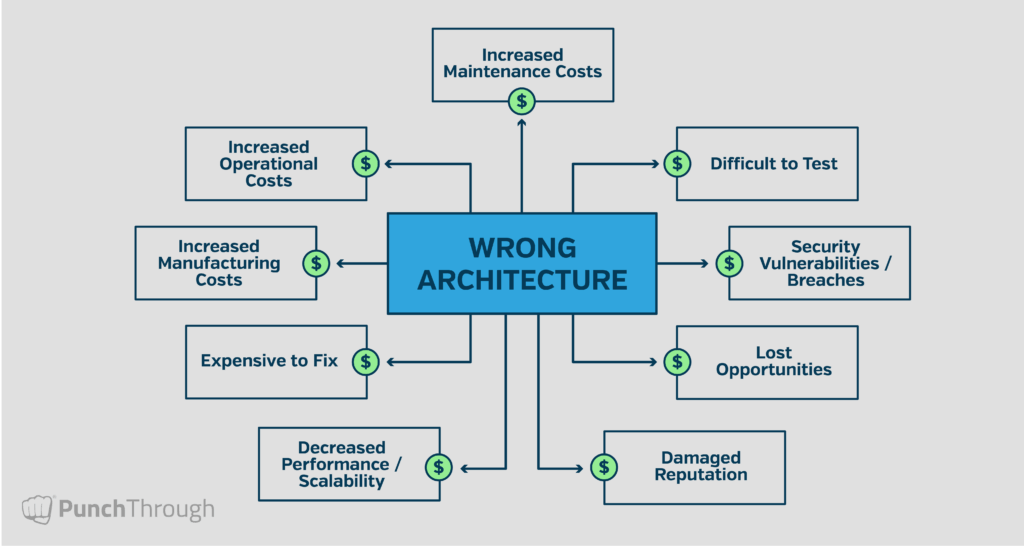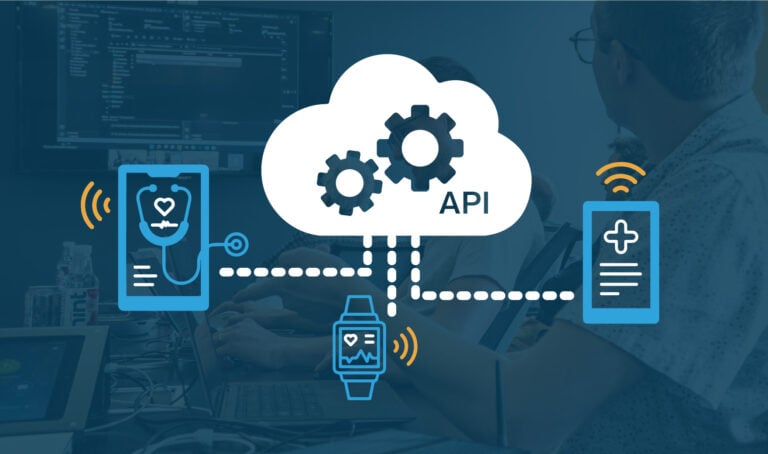Introduction
Software and system architecture decisions are some of the most consequential choices in any development project. They shape not just how a system is built, but how well it performs under pressure, how easily it scales, and how securely it handles sensitive data. A well-planned architecture supports long-term maintainability, operational resilience, and cost efficiency. Poor decisions, on the other hand, can quietly build into technical debt that derails progress, increases risk, and drives up costs.
What You’ll Get From This Article
This article walks through how cloud architecture reviews reduce risk, improve performance, and support compliance—especially in connected medical ecosystems. Whether you’re designing a new system or evaluating an existing one, you’ll get a practical overview of what’s involved in reviewing architecture for regulated, cloud-connected systems—including the kinds of decisions that introduce systemic risk, and how to evaluate them effectively in both traditional and Agile workflows.
What Is an Architecture Review?
While there’s no single definition of an architecture review, the core purpose remains the same: to assess whether your system’s architecture—spanning software, hardware, or a combination of both—supports the goals and constraints of the project. It’s a checkpoint designed to evaluate whether the decisions being made will hold up under the demands of real-world use.
Every architecture review is shaped by the specific needs of the system, but there are common areas that most reviews should address. A sound architecture typically:
- Aligns with business requirements – Ensures that technical decisions support the goals and priorities of the organization.
- Is secure by design – Accounts for threats and mitigations from the ground up, not just through post-implementation testing.
- Scales with usage – Can handle increased demand as more customers or users come onboard.
- Scales with team growth – Supports multiple development teams working in parallel without stepping on each other.
- Follows best practices and standards – Incorporates industry conventions and proven patterns to minimize risk.
- Is well-documented – Captures key decisions, rationales, and architectural overviews for future reference and onboarding.
- Reuses existing solutions – Leverages shared libraries, COTS (commercial off-the-shelf) tools, or internal frameworks where appropriate.
- Avoids known issues or gaps – Identifies and mitigates potential problem areas before they become technical debt.
Each organization may weigh these criteria differently, depending on its industry, priorities, or risk tolerance. What matters is that your review process makes those priorities explicit—and that any Architecturally Significant Decision is evaluated against them.
What Is an Architecturally Significant Decision?
Architecturally Significant Decisions (ASDs) are the choices that shape how your system is designed, implemented, and ultimately maintained—and they’re the ones that come with the highest stakes. These are the decisions that, if made incorrectly, would be costly or difficult to change later. Whether the cost is financial, technical, regulatory, or operational, these decisions have a disproportionate impact on the success and sustainability of your architecture.
Common types of ASDs include:
- Shared Libraries – Assessing both internal and third-party dependencies for security, performance, long-term support, and fit for purpose.
- External Integrations – Evaluating cloud services or third-party APIs to ensure they’re reliable, secure, and able to scale with usage.
- Internal Integrations – Ensuring that internal components interact safely and reliably, without introducing new failure points or bottlenecks.
- Communication Protocols – Selecting protocols that balance efficiency, interoperability, and compatibility with existing systems.
- Privacy – Designing systems that protect sensitive data, such as PII and PHI, and comply with relevant regulatory frameworks.
- Access Controls – Defining who can access what—and under what conditions—both internally and externally.
- Cryptography – Verifying that encryption is applied appropriately, securely, and in line with industry standards.
The impact of a poor architectural decision might be immediate and measurable—like increased cloud costs or regulatory fines for noncompliance. But it can also show up more subtly over time: technical rework, fragile systems, scaling challenges, or repeated outages. That’s why these decisions demand deliberate scrutiny before they become deeply embedded in your system—especially in connected medical devices, where stability, security, and regulatory alignment are foundational to product viability.
For a closer look at how these decisions play out when architecting connected medical web applications, see our guide to designing a robust medical web API.
Why Architecture Reviews Matter (Especially in Regulated Environments)
In connected medical systems, architecture reviews serve a broader purpose: reducing not just technical risk, but also compliance risk. Decisions made early in development—around communication protocols, data storage, cloud providers, and integration patterns—can directly affect your ability to meet regulatory requirements, protect PHI, and ensure clinical performance. A strong review doesn’t just evaluate cloud components, it ensures the full connected system functions reliably across mobile, embedded, and cloud layers.
That’s why architecture reviews go beyond technical best practices. They help ensure your system is ready for real-world regulatory, security, and operational demands. When these decisions go unchecked, the downstream consequences add up quickly.

Poor architectural choices can introduce security vulnerabilities, limit scalability, or jeopardize compliance. And once they’re implemented, the cost to correct them—both in time and resources—can be significant. For example:
- Choosing the wrong cloud services can lead to unexpected computing costs, vendor lock-in, or gaps in security and compliance.
- Misguided decisions around cryptography may create vulnerabilities, reduce device battery life, inflate manufacturing costs, or cause compatibility issues across hardware platforms.
Intentional, well-reviewed architecture decisions help teams avoid these pitfalls. They ensure your system can scale, adapt, and perform reliably under pressure—without surprise costs or last-minute workarounds.
In connected systems, these reviews also serve as a cost-control mechanism—reducing time-to-market delays, avoiding rework from architecture drift, and minimizing the risk of regulatory pushbacks that can halt product release.
When to Conduct a Cloud Architecture Review
Cloud architecture reviews aren’t needed at every stage, but there are specific moments when they can make a measurable difference, especially when early decisions start to harden into the system. Consider a review when:
- You’re moving from prototype to production
Early technical shortcuts often don’t scale. This is the time to ensure the architecture supports long-term growth, maintainability, and compliance. - You’re integrating multiple systems (e.g., mobile, cloud, device firmware)
System-level complexity increases risk. Architecture reviews help prevent fragile dependencies and integration failures. - You’re scaling beyond your initial architecture
What worked for five pilot users might collapse under the demands of real-world usage, reviews ensure scale-readiness across the stack. - You’re preparing for regulatory submissions or audits
A review can surface architectural gaps that could impact safety, traceability, or documentation—especially for Class II/III devices. - You’ve experienced instability, rework, or integration failures
These are often symptoms of deeper architectural misalignment, reviews help teams diagnose root causes, not just fix surface issues.
These are key inflection points where a cloud architecture review can reduce risk and prevent costly surprises later.
When to Seek External Support
While many architectural decisions can be handled internally, there are moments when an outside perspective is critical.
If you’re navigating strict compliance requirements, complex integrations, or uncertain scalability in a connected medical ecosystem, a focused architecture review can uncover risks before they derail progress or impact patient safety. The right guidance early on can turn architecture from a liability into a competitive advantage.
In high-stakes environments, engaging the right partner can make all the difference. Let’s talk if you’re looking for experienced support.
Moving Forward with Confidence
Cloud architecture reviews are more than a technical exercise—they’re a strategic safeguard for connected medical systems. By catching issues early, aligning decisions with real-world requirements, and ensuring your architecture can scale securely and compliantly, reviews help you build a stronger foundation for product success.
If you’re interested in how to run an effective architecture review—or how to adapt the process for Agile teams building regulated systems—our follow-up articles break it down with practical steps, real-world examples, and tools to make architecture reviews part of your ongoing development workflow.




